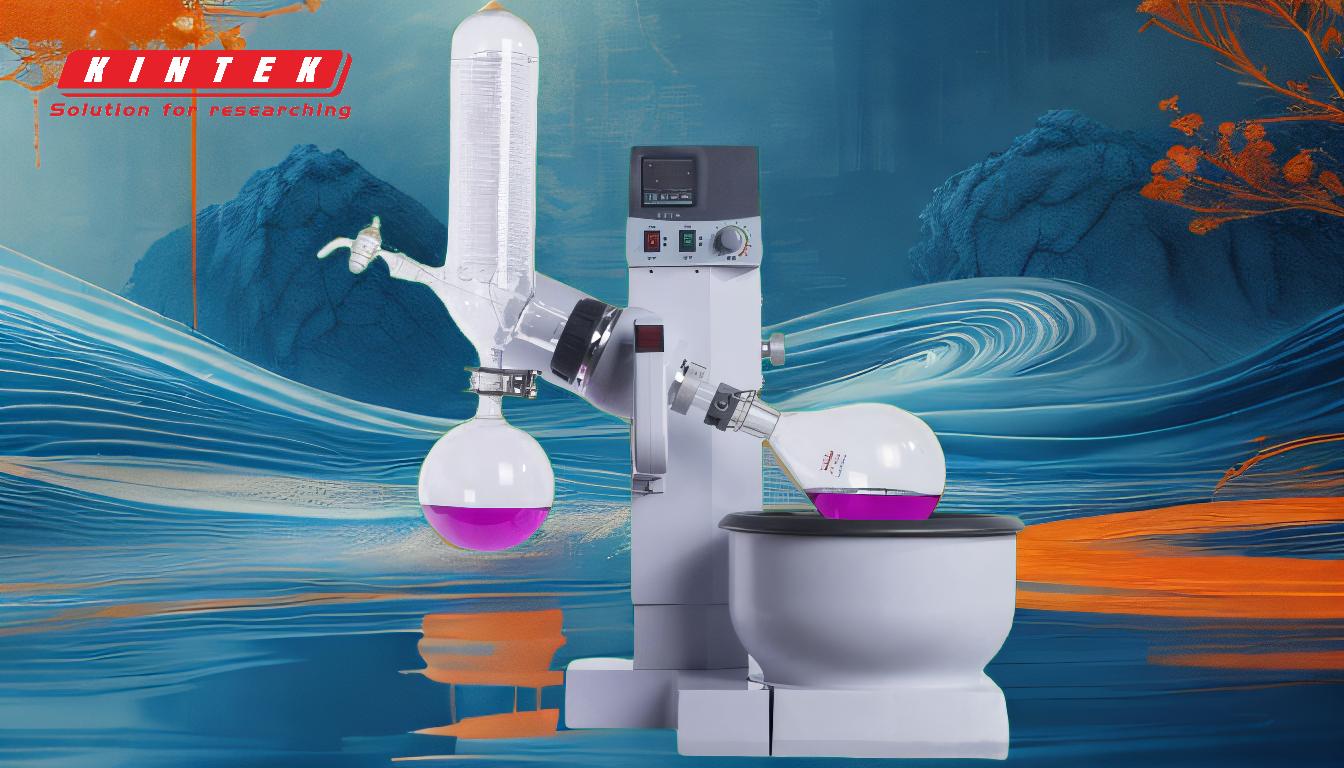A rotary evaporator (rotovap) is a versatile piece of equipment used for efficient and gentle removal of solvents from samples. Its performance depends on several critical conditions, including vacuum degree, temperature control, rotation speed, and system tightness. These factors influence evaporation rates, distillation efficiency, and the ability to handle heat-sensitive materials. Proper optimization of these conditions ensures effective distillation while minimizing sample damage. Key components like vacuum pumps, sealing rings, and condensers also play a significant role in maintaining system performance. Understanding and controlling these conditions is essential for achieving optimal results in laboratory applications.
Key Points Explained:

-
Vacuum Degree and System Tightness:
- The vacuum degree is a critical factor in determining the efficiency of a rotary evaporator. A higher vacuum reduces the boiling point of solvents, allowing for gentler evaporation, which is particularly important for heat-sensitive samples.
- The vacuum degree depends on the power of the vacuum pump and the tightness of the system. Leaks in the system can significantly reduce efficiency.
- Materials like PTFE for sealing rings and vacuum tubes are preferred due to their superior wear and corrosion resistance compared to rubber.
-
Temperature Control:
- The temperature of the water bath or heating pot directly affects the evaporation rate. Higher temperatures increase the rate but must be carefully controlled to avoid damaging heat-sensitive samples.
- The cooling medium temperature in the condenser is equally important. Lower cooling water temperatures improve condensation efficiency, preventing solvent loss and increasing overall distillation efficiency.
-
Rotation Speed:
- The rotation speed of the evaporation flask influences the evaporation rate by increasing the surface area of the sample exposed to heat and vacuum. Optimal rotation speeds ensure uniform heating and efficient solvent removal.
- Excessive rotation speeds can lead to sample splashing or foaming, while too slow speeds may reduce efficiency.
-
Condenser Efficiency:
- The condenser's ability to cool and recover evaporated solvents is crucial. Efficient condensers prevent solvent loss and ensure high recovery rates.
- The type of condenser (e.g., coil or dimroth) and its cooling power must match the evaporation rate to maintain system performance.
-
Vessel Size and System Capacity:
- The size of the evaporation flask is limited by the rotovap model and affects the volume of samples that can be processed. Larger flasks allow for higher sample volumes but may require adjustments in rotation speed and vacuum settings.
- Distillation efficiency determines the number of samples that can be processed daily. Higher efficiency is particularly important for large-scale operations.
-
Solvent Type and Properties:
- The type of solvent being evaporated influences the required conditions. Solvents with lower boiling points require lower vacuum levels and temperatures, while those with higher boiling points need more aggressive settings.
- Understanding solvent properties helps in optimizing vacuum, temperature, and rotation speed for each specific application.
-
System Components and Materials:
- The quality and compatibility of system components, such as vacuum pumps, sealing rings, and tubing, directly impact performance. PTFE and other corrosion-resistant materials are preferred for durability and reliability.
- Regular maintenance of these components ensures consistent performance and prevents system failures.
By carefully controlling and optimizing these conditions, users can achieve efficient and reliable distillation with a rotary evaporator, tailored to their specific laboratory needs.
Summary Table:
| Factor | Impact on Performance |
|---|---|
| Vacuum Degree | Higher vacuum reduces boiling points, enabling gentler evaporation for heat-sensitive samples. |
| Temperature Control | Optimal heating and cooling temperatures prevent sample damage and improve efficiency. |
| Rotation Speed | Balanced speed ensures uniform heating and efficient solvent removal without splashing. |
| Condenser Efficiency | Efficient condensers recover solvents effectively, minimizing loss and improving recovery. |
| Vessel Size | Larger flasks handle more samples but may require adjustments in settings. |
| Solvent Type | Solvent properties dictate vacuum, temperature, and rotation speed requirements. |
| System Components | High-quality, corrosion-resistant materials ensure durability and consistent performance. |
Optimize your rotary evaporator performance—contact our experts today for tailored solutions!





















